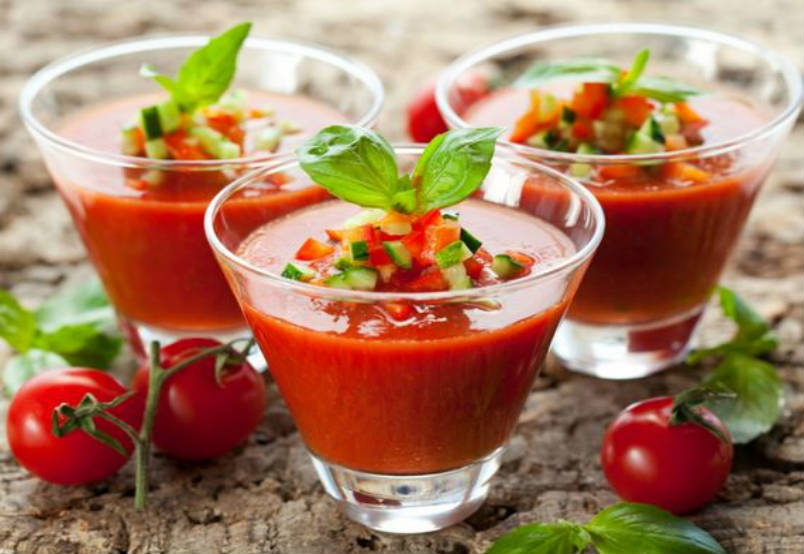Historical Influences on Andalusian Cuisine
The peppered history of Andalusia and its peoples has occasioned a fusion of ingredients and cooking methods. The earliest inhabitants of the region were Neanderthals, followed by an influx of North African tribes that created farming settlements. The Phoenicians established trading posts along the coast, founding the sea port of Cádiz in 1,110BC and planting grapevines and olive trees, and then the Celts swept south throughout Europe around 800BC. The Romans invaded in 206BC, ousting the Carthaginians that had settled several hundred years earlier and gotten busy producing olive oil, until the Roman empire collapsed and a period of barbarity commenced.
Of the marauding northern tribes, the Visigoths predominantly reigned (albeit in a somewhat chaotic fashion), leading the Arabs to name the area 'al-Andalus' when they conquered in 711 (because they associated it with 'the Vandals'). The arrival of the Moors from Arabia and North Africa proved the greatest influence on food within southern Spain, which they made their home for 8 centuries.
The Moors didn't only bring with them aromatic spices and herbs. They also introduced irrigation systems (the 'huertas') to the arid lands of the south, enabling the expansion and improvement of vegetable gardens and orchards. Rice and durum wheat (the basis of pasta) were cultivated, and oranges, lemons, aubergine, almonds, dates, peaches, apricots, quince and coffee were brought to Andalusia. La Cazalla is actually 'Huerta de la Cazalla' and we are proud to note that we are still growing five of the aforementioned produce. Most Andalusian cooking took place on a 'stove-top' due to lack of firewood and it being too hot to have an oven in the house, but you can still find Moorish ovens in existence (there's a fabulous one at Restaurante Asador el Muelle in Benaoján).
Despite all of these invasions and influences, the cuisine in Andalusia remains in general fresh and simple, with leanings towards a peasant's diet due to historical periods of abject poverty in Spain, particularly devastating during the Spanish Civil War. Staples were soups, paellas and rich stews cooked for great lengths of time on those 'stove-tops', called poyos, which were stone counters surfaced with tiles, running along one wall with inset hornillas/burners utilising the available, relatively smoke-free scrub wood. The poyos and the poverty may be long gone, but the dishes remain, and these are a few you can sample during your visit to Andalusia:
Cold soups for chilling in the summer
Typically served in a glass, Gazpacho Andaluz is both filling and cooling, and pretty easy to make if you have a blender. To make one litre (four glasses):
Ingredients for Gazpacho Andaluz:
1 kg ripe, very red tomatoes, washed and cut into four
1 green pepper (the Italian kind - about 60 grams), washed, de-seeded & cut into 4 or 5 pieces
1 cucumber (about four fingers wide), peeled and cut into 4 or 5 pieces
1 white onion (around 100 grams), peeled and cut into 4 pieces
1 slice of bread (about 50 grams)
1 clove of garlic, peeled and roughly chopped
3 tablespoons of olive oil
3 tablespoons of white wine vinegar
1 teaspoon of salt
Preparation
Cut the bread into pieces and put them into your blender (or a large pot, if you are using a hand mixer). Add the tomatoes, pepper, garlic, onion and cucumber. Cover and blend thoroughly, until no lumps remain. Now add the salt, oil and vinegar. Start with three tablespoons of vinegar, adding more to your taste. Blend for another five seconds and taste, adjusting the salt and vinegar to your liking. If the gazpacho is too thick, add small amounts of cold water until it is to your liking, but bear in mind that the more water you add, the more-diluted the flavour will be. Finally, place the soup in the fridge to be served very cold. It's as easy as that!
Salmorejo is a thicker, more filling dish. Like gazpacho, it is served cold and combines tomatoes, garlic and olive oil, but it is heavier on the bread-side and is usually liberally garnished with chopped hard-boiled eggs and strips of Andalusian ham. Its origins lie in the city of Córdoba and the bread creates a far creamier texture and a pinker coloration than gazpacho. Use good quality, red and not over-ripe tomatoes, bread that has texture but a fine crust (our favourite breakfast, the mollete is a good choice) and high-quality extra virgin olive oil, like our own, that we provide to our guests for free!)
Ingredients for Salmorejo (serves 5-6 people):
1 kilo of ripe (but not squishy), very red tomatoes
200 grams of hard bread (best to use a type with a very fine white bread crust)
Half a clove of garlic, finely chopped
160 ml extra-virgin olive oil
Salt
1 hard-boiled egg, chopped
Iberian ham, sliced into strips or chopped (sufficient in quantity as a topping)
Preparation
Thoroughly wash the tomatoes, remove the hard stalk piece at the top, cut them into quarters and pulverise them in a mixer/blender. Strain the pulped tomatoes into a pan through a fine-mesh sieve for a smoother consistency. Cut the bread into pieces and put those, with the tomato pulp back into the blender, and leave to soak for 10 minutes. Add the garlic, then blend on a slow, gentle speed while gradually adding the olive oil (slowly adding the oil whilst blending means that the Salmorejo emulsifies and picks up texture). Add salt in small increments to taste, and serve in bowls, topping with the egg and ham. Delicious!
Jamón ibérico (a dry-cured ham produced from Iberian pigs)
A perfect starter or snack for winter or summer (unless you're a vegetarian, Jewish or Muslim), you really shouldn't leave Andalucía without sampling this high quality ham - the preparation of which is pretty much an art form here. There are different qualities: de bellota (the pigs ate free-range acorns in oak forests); de recebo (the pigs ate a combination of acorns and grain); puro guarantees both parents were pure bred.
The meat is salted and left to dry for two weeks before being rinsed and cured for at least twelve months. The result is ham relatively high in fat with a mouthwatering richness, best eaten in thin slices or with a drizzle of La Cazalla's olive oil and a side of breadsticks.
Migas
Migas strongly demonstrates a North African influence, closely resembling couscous, and in the true spirit of utilising leftovers during hard times was originally made from bread remaining after breakfast. The breadcrumb base is generally combined with sausauge, bacon, olive oil, garlic and dried red pepper, although using leftovers from the kitchen would be in keeping with the origins of the dish. A simple dish to make in one pan, lightly sauteing the meat, vegetable and croutons separately before combining them together with paprika.
Pescaíto frito
Thought to have been introduced to Andalucía by the Sephardic Jews during the 16th century, this popular Shabbat dish is not only restricted to coastal towns and is incredibly simple. The name means 'fried little fish' and to prepare them, you simply coat small, usually white, fish in flour (nothing else), deep fry them in olive oil, salt them and serve them with a quarter of lemon. The Mercadona supermarket in Ronda has an excellent fresh fish section where you can buy your little fish, and La Cazalla provides you with the olive oil and lemons. Simples!
Warming winter stews, Andalusian-style
With daytime temperatures generally hovering around 15 degrees Celsius, the word 'winter' may not immediately spring to mind while you are enjoying your stay in Andalusia. In fact, the lower temperatures make hiking, cycling and other adventure sports more comfortable. But when the thermometer dips below 6 degrees at night, you may want something hearty to eat by the hearth. These our some of our local favourites:
Carilladas de Cerdo (Pork Cheeks)
Seen on almost every menu in and around Ronda, these oh-so-tender pieces of meat in succulent gravy will quickly become a favourite of yours too. If you fancy cooking up a pot of your own (the kitchen at La Cazalla is amply equipped for catering to large groups), here's a simple recipe for up to four people:
Ingredients
1 kg pork cheek
200 grams of onion
300 grams of tomato
50 grams of red pepper
50 grams of green pepper
75 grams of carrots
6 garlic cloves
3 bay leaves
Salt and pepper
3 or 4 cloves
Saffron
Paprika
250 ml white wine
75 ml brandy
150 ml extra virgin olive oil
Preparation
Trim the pork and place it to one side. Clean and peel the vegetables, chopping them into even pieces. Separate the tomato from the rest. Heat the olive oil in a pressure cooker. When hot, add the pork and brown on both sides. Pour in the brandy (with care, as it is flammable) and allow it to evaporate. Add the condiments, together with the vegetables (except the tomato) leaving to cook for a few minutes before adding the wine. Leave it to reduce and then add the tomato, sugar and a little stock or water if necessary.
Cover and simmer for 20 or 30 minutes. Remove the pork and sieve the sauce (using a sieve is recommended, as the blender changes the colour and texture). Re-heat the sauce with the pork and serve.
Rabo de Toro (Oxtail)
A popular ingredient in many Andalusian dishes (try the croquettes!), rabo de toro stew makes for a perfect winter-warmer after a day out hiking around Ronda. Here's a traditional recipe for four people:
Ingredients:
2 kgs of oxtail, cut into regular-sized pieces
3 leeks, sliced
4 onions, sliced
4 carrots, sliced
4 cloves of garlic, peeled but left whole
Half a litre of broth/stock
1 litre of red wine (plenty of vineyards nearby!)
2 bay leaves
2 cloves
Salt and pepper
2 tablespoons of flour
Preparation:
Wash the oxtail pieces, season with salt and pepper, and coat with flour. Heat the olive oil in a large pan and gently fry the oxtail until it is well-browned on all sides. Remove from the pan and keep to one side. Lightly saute the vegetables and garlic in the same pan, then add the bay leaves and cloves. Place all of the cooked ingredients, including the oxtail, into a large saucepan or casserole with a lid, cover with the wine and leave to simmer gently for at least 2 hours, until the meat easily separates from the bone. You can either enjoy this divinely-moist dish immediately or let it rest for 12 hours before gently reheating it in a basin placed over boiling water.
We are fortunate to still have a thriving huerta at La Cazalla de Ronda, and we love to share this bounty with our guests, leaving them little presents in the kitchen throughout their stay. Additionally, just outside the kitchen is a Jardín del Chef (Cook's Garden), and guests are welcome to help themselves to whatever vegetables and herbs they need to create their favourite meals. If you don't feel like cooking, take a look at our recommendations for restaurants or let us put you in touch with a private chef in advance. Whatever the needs of your party, just let us know and we will be delighted to assist you.










